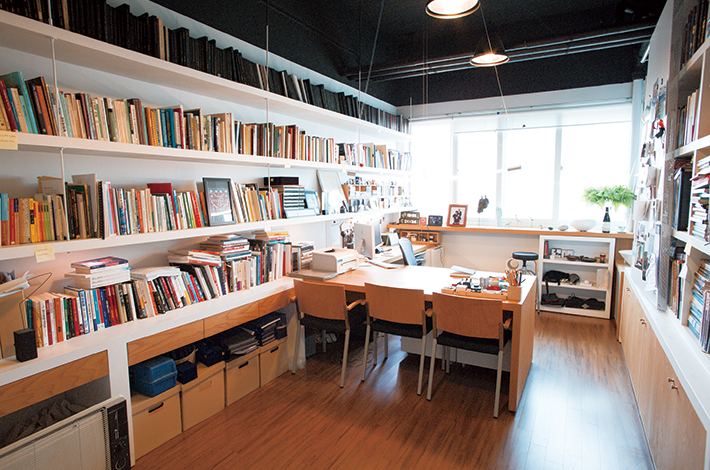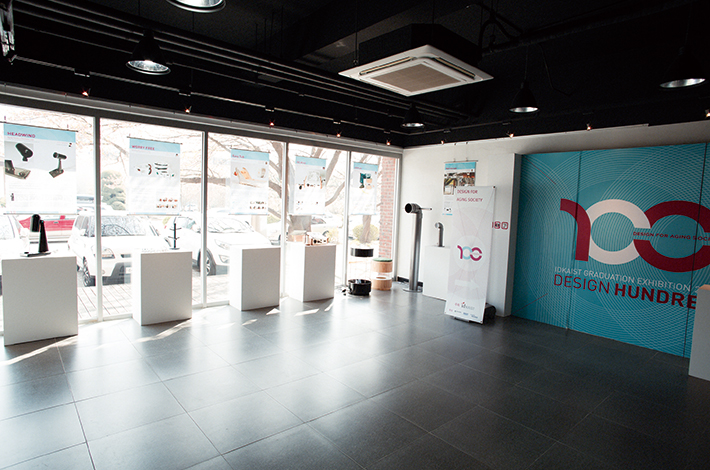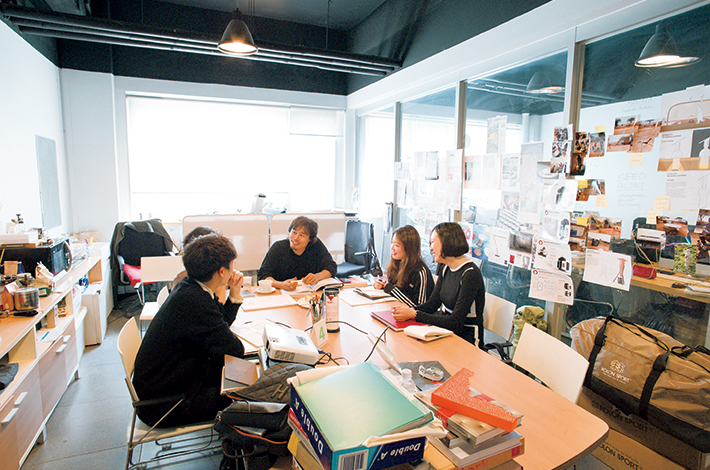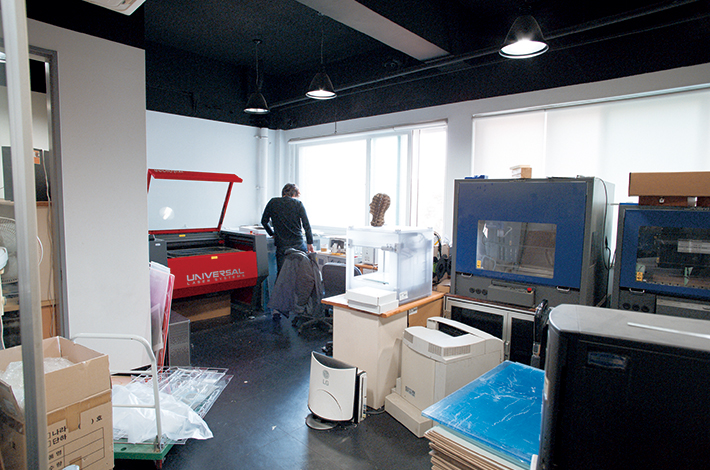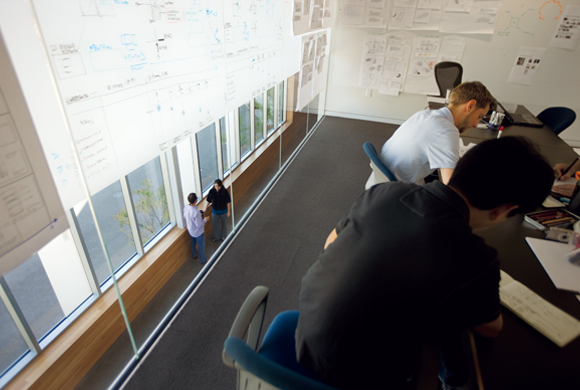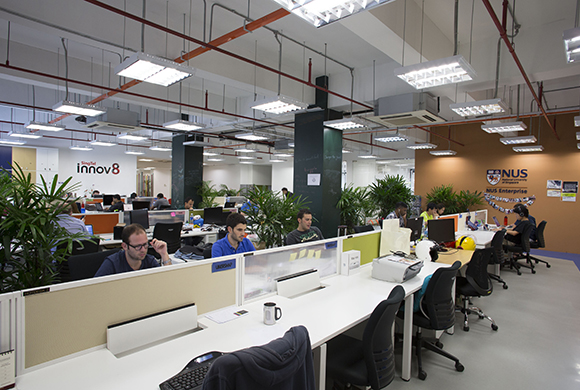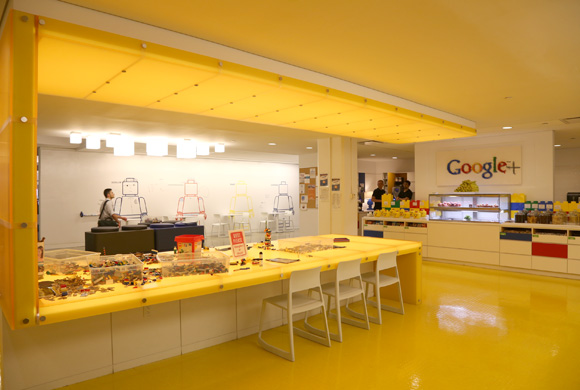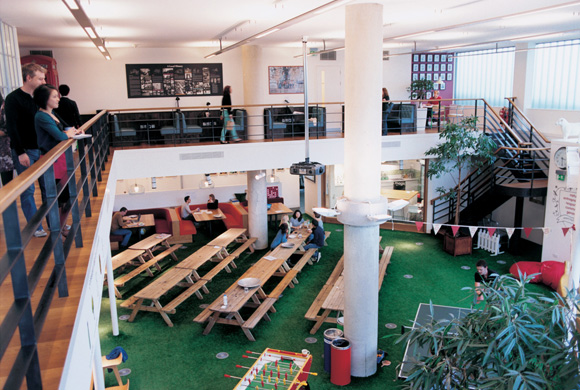Workplace
Feb. 4, 2019
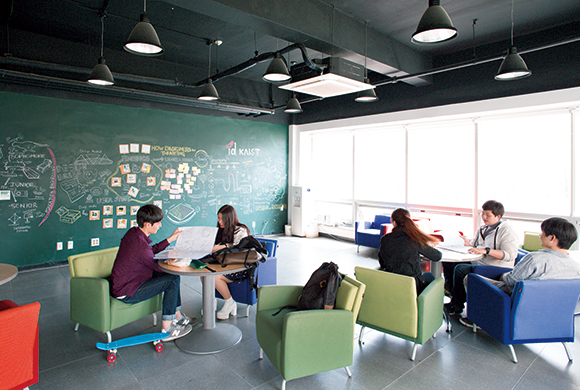
Designers’ Vision of the Future
The Department of Industrial Design, KAIST
[id KAIST] Daejeon, Republic of Korea
KAIST receives about one-third of its budget from the Korean government. None of the students pay tuition; male students are exempt from conscription (otherwise limited to graduate-school students). Because of this, there was a rush by outstanding students when it first opened.
The building was constructed in 1970, before the industrial design school opened, and has a very normal university construction with classrooms on both sides of the corridors. “Somehow we needed to make this old building more open, increase visibility and encourage collaboration,” says Kun-Pyo Lee about the issues facing them at the time of renovation.
One difference with other university buildings is the space. The classrooms in other schools are about 23 square meters in size. However, each KAIST professor has three classrooms of the same size. “We respect the fact that the rooms each reflect the individual personality of the professor,” says Dean Kyung-Won Chung. There is also one floor that is entirely dedicated to collaborative research. The labs there are not separated, so any professors or students in the area can do research here.
“I understand that laboratories in Japanese national universities are based on a lecture system,” Prof. Chung says. “The strong point of that is when you’re doing in-depth research, but at the same time, I wonder with things all walled up if there isn’t some concern about isolation. We are trying to encourage collaboration, so we removed the partitions.”
In one corner is a permanent exhibition space for student works. On the day of our interviews, objects created by 3D printer were on display. But it’s not limited to this space; throughout the building one sees all kinds of products on display. We were told that this, too, is intended to encourage greater exchange among students.
Reflecting the interdisciplinary curriculum, open spaces have been set up in several locations so people from different specialties can gather. “In a typical university design program, the focus is on education in drawing and manual arts,” says Prof. Chung. “We believe, however, that modeling is only one element to making the product. We need knowledge in engineering, management and the humanities, so we’re always in discussion with experts in those fields as well. Our hope is that designers like that will leave the nest here.”
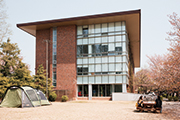 The School of Design building, in the massive KAIST campus.
The School of Design building, in the massive KAIST campus.
Established: 1971
Enrollment: 10,249 (2013)
Employees: 1,140 (2013)
http://www.kaist.ac.kr
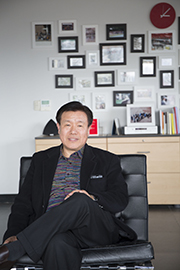 Kyung-won Chung
Kyung-won Chung
Dean of id KAIST. Specializes in strategic design management. Currently involved in issues regarding corporate design management, intellectual property, brand equity, etc.
id KAIST, founded by the Korea Advanced Institute of Science and Technology (KAIST), a national university in Korea, was selected by Business Week magazine as one of the 30 best-designed schools in the world. id KAIST Director Kun-Pyo Lee has advocated something known as Design 3.0—and explains more about it.
Q: What kinds of things are KAIST involved in?
“KAIST’s design school was first established in 1986. We selected superior students capable of going on to medical school, and lectures are conducted in global-standard English. Instruction is provided in mathematics and science, and with the cooperation on engineers and marketers they aim at teaching interdisciplinary design.
“This is in keeping with recent changes in the ‘design view.’ In the past, Korea’s manufacturing industries grew by creating products based on those of companies in other countries. Design’s role in this was to simply change the exterior appearance. However, along with Korea’s internationalization, manufacturing began to shift from mass-production to more specialized, smaller production. The change in design was remarkable, from a focus on the object to the user experience. The result was that there was a demand for designers to handle this new role. Today companies like LG and Samsung employee designers with experience in user experience, consumer research, cultural anthropology and other fields. Playing this major new role are id KAIST graduates.
“However, we are also looking ahead to another future. Traditional design based on drawing pictures is Design 1.0; the human-focused objective of user experience design is Design 2.0; while graduates are now searching for Design 3.0.
“Today, this is something students and graduates are trying to make more solid, and while some portions are still incomplete, the keywords for Design 3.0 have emerged: Open, Big and Deep. Open is an open design method of mixing with average people from around the world. Big involves the use of big data. Design in the past stressed observation of user behavior, but users today are giving details of their lives through social networking. The change should be toward using that huge amount of data in design. Deep means that, to resolve design issues, human needs and desires need to be deeply and thoroughly understood.
“id KAIST’s mission is to very quickly make Design 3.0 a core skill for designers, and to think about how to incorporate it in the education program. This is because as the paradigm of design changes, the core skills of the designer will inevitably change as well. One example in the switch from Design 1.0 to 2.0 was the change from drawing as a core skill to the computer.
“The shift from Design 2.0 to 3.0 follows in the wake of cloud sourcing and increased openness. craftsmanship, idea creation, interaction and other technical innovations that result in greater democratization. Thanks to 3D printers, creating things is much easier, while open sourcing allows ideas to shared. Design is not just for experts anymore. If people stay too committed to the core Design 2.0 skills of interactive design and the making of things, the profession of designer will inevitably decline.”
Q: In times like this, what will be the role of the designer?
“Here is the way we think about this. Design 1.0 was about design and shape; 2.0 focuses on design and recognition; while 3.0 is about a stress on the harmony of social context, sensitivity and culture. Rather than output in terms of product, it is in the form of an ecosystem. For example, a designer creates a platform, applies it, and then many users finish what is an original product. The role of the designer in this case is not to complete the product. The cloud provides help by demonstrating creativity—it is, so to speak, the Enpowerer.
“Currently, the ‘artifacts’ of Design 3.0 do not exist. However, there are many hints about it, as can be seen in the announcements for Google’s mobile phone module service, Project Ara. Users will be able to assemble the modules as they like, so they can create their own unique mobile phone.
“In the past, a designer had to transmit the concept to all users, or it was seen as a failure. It’s the opposite today. Many users, separate from the designer’s intention, finish up the design that they like. We judge that not as a design failure but a success, and intend to keep pushing this forward.
“To make Design 3.0 more concrete, we will continue to work it into id KAIST’s educational programs. We also plan on holding an international Design 3.0 symposium. During the paradigm shift from Design 1.0 to 2.0, the id KAIST students were exposed to harsh criticism, such as, ‘Why don’t you draw pictures? ‘and, ’Is that really design?’ The same thing could happen again. At the same time, though, the new design paradigm and design education developed at id KAIST can answer these questions, and is more than anything else an exciting mission. My ambition is to accomplish this by the time of my retirement!”
Consultancy for Work Style:Erae Architects & Engineers Interior
Design:Erae Architects & Engineers
From WORKSIGHT 06
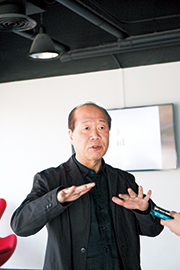
Kun-Pyo Lee
Design Methodology, Interface Design,
Human-Centered Design, Design Planning
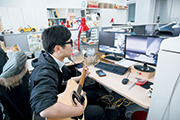
The students’ seating depends on the theme of their research, with a wide variety of items available around them. This student is working on a music-related project.
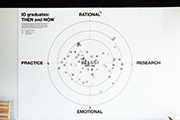
Alumni have donated some 5,000 won each for the “Buy your junior a cup of tea” project. The artwork in the photo is a display of what fields the alumni are active in.


